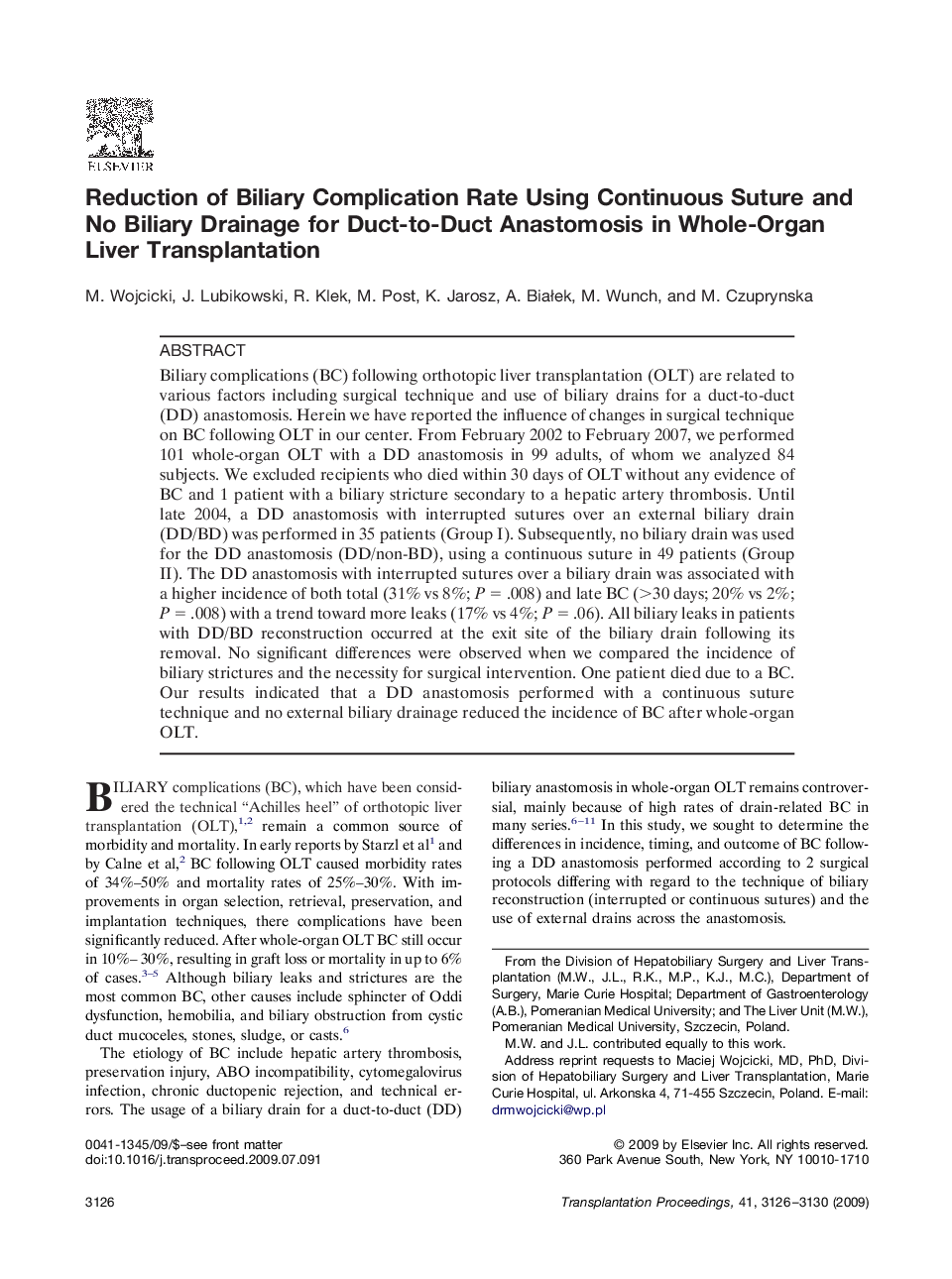| Article ID | Journal | Published Year | Pages | File Type |
|---|---|---|---|---|
| 4259005 | Transplantation Proceedings | 2009 | 5 Pages |
Biliary complications (BC) following orthotopic liver transplantation (OLT) are related to various factors including surgical technique and use of biliary drains for a duct-to-duct (DD) anastomosis. Herein we have reported the influence of changes in surgical technique on BC following OLT in our center. From February 2002 to February 2007, we performed 101 whole-organ OLT with a DD anastomosis in 99 adults, of whom we analyzed 84 subjects. We excluded recipients who died within 30 days of OLT without any evidence of BC and 1 patient with a biliary stricture secondary to a hepatic artery thrombosis. Until late 2004, a DD anastomosis with interrupted sutures over an external biliary drain (DD/BD) was performed in 35 patients (Group I). Subsequently, no biliary drain was used for the DD anastomosis (DD/non-BD), using a continuous suture in 49 patients (Group II). The DD anastomosis with interrupted sutures over a biliary drain was associated with a higher incidence of both total (31% vs 8%; P = .008) and late BC (>30 days; 20% vs 2%; P = .008) with a trend toward more leaks (17% vs 4%; P = .06). All biliary leaks in patients with DD/BD reconstruction occurred at the exit site of the biliary drain following its removal. No significant differences were observed when we compared the incidence of biliary strictures and the necessity for surgical intervention. One patient died due to a BC. Our results indicated that a DD anastomosis performed with a continuous suture technique and no external biliary drainage reduced the incidence of BC after whole-organ OLT.
